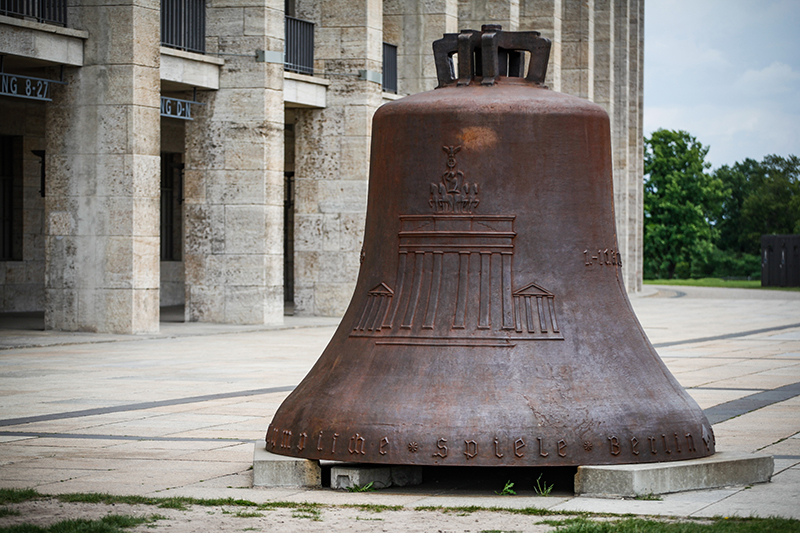We’re back with more Olympic history! This time with more sinister undertones. The year was 1936 and Adolf Hitler, craving the adoration of the world, was eager to portray a perfect German society during Berlin’s hosting of the 11th Summer Olympic Games. You and I both know life was not perfect at home – atrocities and civil rights abuses were already mounting before the start of World War II.
The Olympics, however, served as a propaganda vehicle and the city’s brand-new stadium, the Olympiastadion, would be the scene. A soaring bell tower built on plans by architect Werner March created a focal point of the grounds, rising 243 feet on a steel skeleton faced in limestone.
The bell tower housed a custom 9.6-ton steel bell cast in Bochum, a city in western Germany. Steel is an unusual choice for bells, which are most often cast in bronze for better sound quality, but it was donated by a large steel syndicate – flush with cash from the Third Reich's race to rearmament.
The bell was collaboratively designed by Johannes Boehland and Walther Lemcke. The latter also designed that year’s Olympic torch. Adolf Hitler took a keen interest in the symbolism of the bell and appeared alongside it in foreign advertisements summoning ‘the youth of the world’ to Berlin.

Image: German sculptor Walter E. Lemcke in 1933 at work on the 1936 Berlin Olympic bell. Courtesy: Narodowe Archiwum Cyfrowe (National Digital Archives of Poland).
On one side of the bell, a German imperial eagle clutches the five Olympic rings in its talons. On the other, an engraving of the Brandenburg Gate, an iconic symbol of Berlin, stands out in high relief.
Circling the rim of the bell is the phrase, "Ich rufe die Jugend der Welt" (I call the youth of the world), along with the date and two swastikas. These show how intimately the bell and the Games were linked to the ideology of National Socialism. The bell sounded as Adolf Hitler officially inaugurated the Games and athlete Fritz Schilgen, the final runner of the Olympic torch relay, brought the flame inside the stadium. It sounded again for the closing ceremonies.

Image: The 1936 Berlin Olympic bell nears completion before the 11th Summer Olympic Games. Courtesy: United States Holocaust Memorial Museum and the National Archives and Records Administration, College Park.
This bell tower, however, has a complicated history with fire. The bell tower served as a storage depot for government archives like documents and film reels – all very flammable materials. Indeed, Soviet troops accidentally set the tower on fire after World War II was over, turning it into a makeshift furnace and chimney. The tower became so unstable that British engineers blew it up in 1947 to prevent an unexpected collapse. The bell tower was the only part of the sports complex destroyed as a result of the war.
The bell, which had survived the fire, didn’t fare so well after the blast and the ensuing 25-story plunge to the ground. It suffered critical structural cracks. In 1956, the bell was rescued from the rubble, only to be used for target practice with anti-tank ammunition.
Between 1960 and 1962, the Glockenturm (bell tower) was rebuilt on the original plans to 253 feet, 10 feet taller than when first constructed. A reproduction bell weighing 4.5 tons was lifted into place. It rings the note F sharp.

Image: The Glockenturm, or bell tower, rises above the Olympiastadion in Berlin.
Today, the viewing platform at the top of the tower is reached comfortably by a lift and offers a sweeping panorama of Berlin and the surrounding areas of Spandau, Potsdam, Nauen, and Hennigsdorf. The old bell (much battered) survives to this day with swastikas partially obscured. It was rededicated outside the south gate of the stadium as a memorial to athletes who lost their lives during the war.

Image: The original 1936 Berlin Olympic bell on display outside the south gate of the Olympiastadion in Berlin.
Cover image: The Olympic bell is transported to the stadium for the 1936 Berlin Games.



